City Profile: The Jewel of Jiangnan
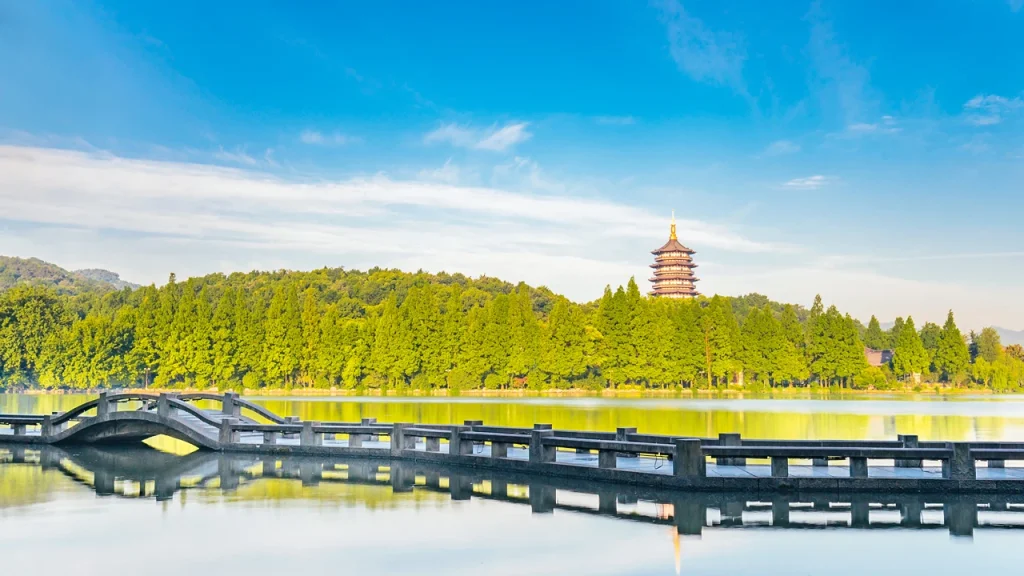
Hangzhou, renowned as “Heaven on Earth,” has been a poetic sanctuary in literati’s works since ancient times. As the capital of Zhejiang Province, it is nestled in the southern wing of the Yangtze River Delta, cradling three world-class cultural heritage sites: West Lake, Qiantang River, and the Beijing-Hangzhou Grand Canal. This city is not only a global hub for digital economy innovation (home to Alibaba’s headquarters) but also one of China’s first-batch national historical and cultural cities. Governed under 10 districts, 2 counties, and 1 county-level city, it spans 16,800 square kilometers and boasts a permanent population exceeding 12 million. Here, millennia-old charm intertwines with modern vitality, where silk, tea, and Zen culture permeate every corner, while dishes like the tender West Lake Vinegar Fish and fragrant Longjing Shrimp add an irresistible allure to the city’s vibrant pulse of daily life.
History and Culture: The Mist and Rain of Wu and Yue, and the Elegance of Song Dynasty Splendor
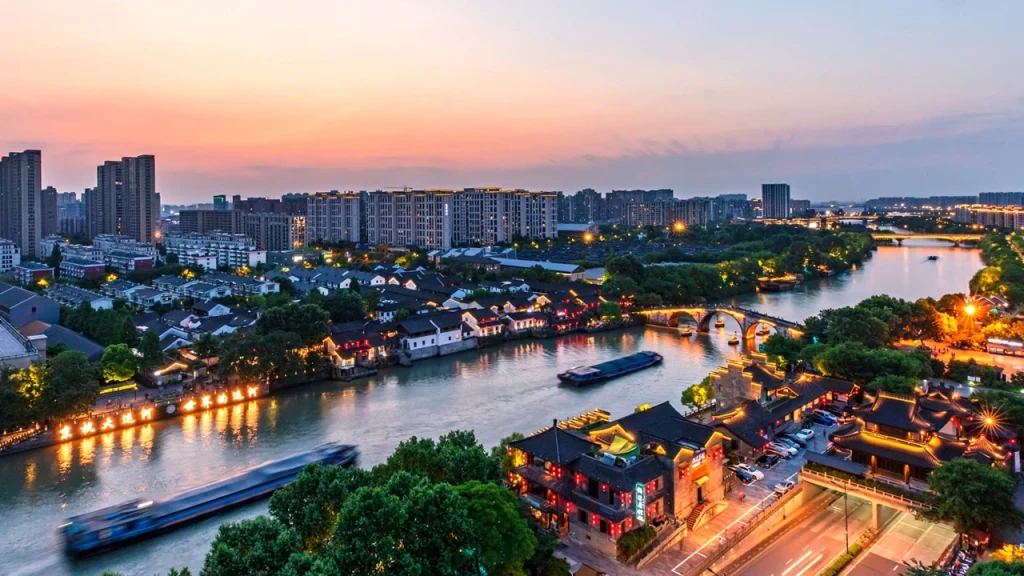
Hangzhou’s history is a condensed chronicle of Jiangnan civilization.
Foundations of the Wu and Yue States: During the Five Dynasties and Ten Kingdoms period, Qian Liu established the Wu and Yue State, making Hangzhou its capital. His policy of “protecting borders and ensuring peace” transformed the city into a haven of prosperity in southeastern China. Today’s Leifeng Pagoda, Baochu Pagoda, and Liuhe Pagoda stand as testaments to the legacy of Wu and Yue.
The Southern Song Dynasty’s Heyday: In 1138, following the Southern Song Dynasty’s relocation, Lin’an (present-day Hangzhou) emerged as the world’s largest metropolis. As recorded in Mengliang Lu (“Dreams of Splendor”), “All goods converge here, with markets bustling in every trade,” while theaters and entertainment quarters echoed with the vibrancy of Song Dynasty poetry and drama.
The Literati Legacy: Poets and scholars left an indelible mark on Hangzhou. Bai Juyi dredged West Lake and constructed Bai Causeway; Su Dongpo’s poetic comparison of West Lake to Xi Shi (a legendary beauty) cemented its iconic status; and Yang Wanli’s ode to the “endless emerald lotus leaves reaching the sky” immortalized the city’s landscapes as timeless symbols of Chinese culture.
Administrative Divisions: A Landscape Unfolding from Lakes and Mountains to Rivers and Seas
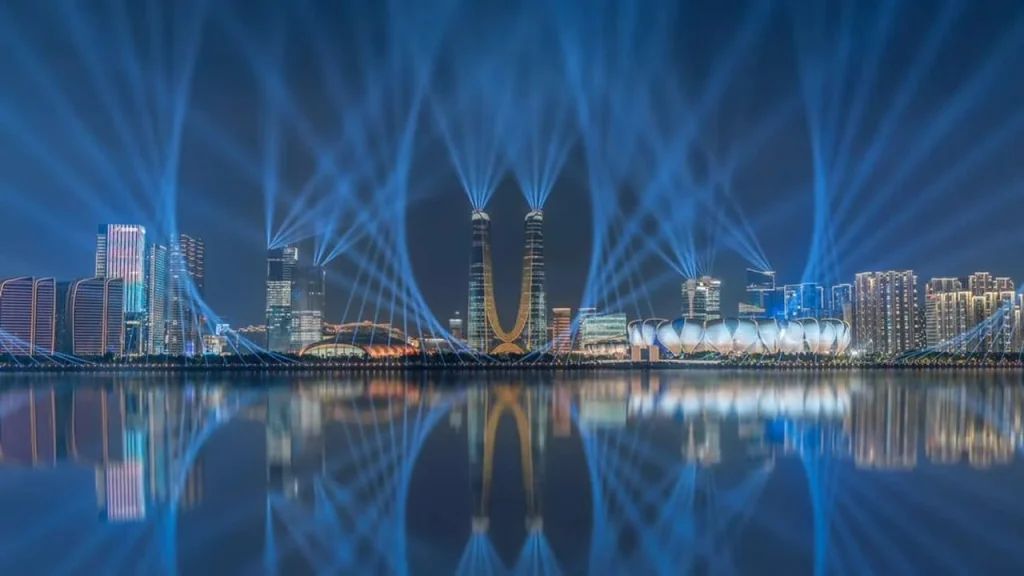
Hangzhou’s administrative map unfolds like a fan, blending geography and culture:
The Core: Shangcheng, Gongshu, Xihu, and Binjiang Districts form the city’s cultural heart and modern business hub, home to West Lake, the Grand Canal, and Xixi Wetland—all emblems of Hangzhou’s heritage and contemporary dynamism.
Rising New Towns: Qiantang and Xiaoshan Districts anchor the “Greater Bay Area” strategy, featuring Hangzhou’s Asian Games Village and futuristic architectural clusters along the Qiantang River, embodying the city’s visionary urban development.
The Ecological Backyard: Yuhang District (site of the Liangzhu Ancient City), Fuyang, Lin’an, Tonglu, Chun’an, and Jiande weave a tapestry of emerald hills and crystalline waters, defining the ecological foundation of the “Hangzhou Metropolitan Area” as a picturesque retreat.
Geographical Environment: A Harmonious Symphony of Mountains, Waters, and Urban Life
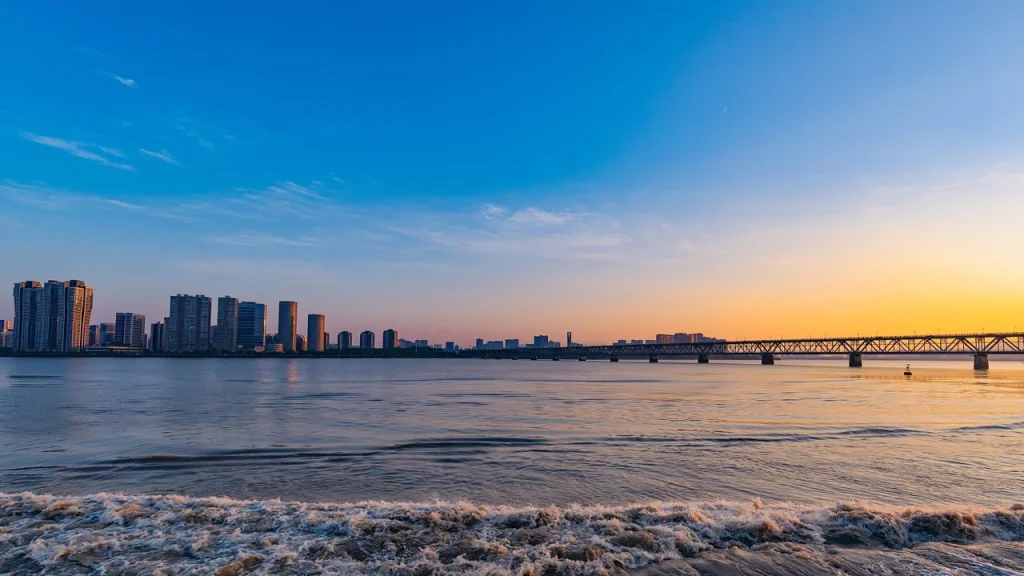
Hangzhou’s landscape is a masterpiece of nature:
The West Lake Mountains: Peaks like North Peak, South Peak, and Baoshi Hill form a semicircular embrace around the city, creating the iconic layout of “mountains on three sides, a city on one.” Though their average elevation is under 300 meters, these hills serve as a natural fortress, adorned with grotesque rocks, ancient temples, and tea plantations.
A Tapestry of Waterways: West Lake, spanning 6.5 square kilometers, features three islands and two causeways, while the Beijing-Hangzhou Grand Canal flows through the city, its waters still alive with the glow of lanterns and the splash of oars near Gongchen Bridge. The Xixi Wetland, dubbed “a winding stream, a veil of mist,” offers a wild sanctuary within the metropolis.
The Confluence of Rivers and Seas: The Qiantang River carves a dramatic zigzag through Hangzhou Bay, culminating in the awe-inspiring tidal bore around the 18th day of the eighth lunar month—a spectacle where “towering waves crash like thunder,” captivating all who witness it.
Climate: A Gentle Jiangnan Paradise for All Seasons

Hangzhou enjoys a subtropical monsoon climate, with four distinct seasons and ample rainfall:
Spring (March–May): Peach blossoms and willow greens adorn Su Causeway, while the fragrance of Longjing tea fills the air—though be wary of the damp “plum rain season.”
Summer (June–August): West Lake’s lotuses bloom in full glory, and nighttime boat tours under the “Three Ponds Mirroring the Moon” offer serene beauty—yet stay alert for typhoons and heatwaves.
Autumn (September–November): Golden plane trees line Beishan Street, and osmanthus blossoms rain down in Manjuelong Valley, marking this as the prime season for travel.
Winter (December–February): The elusive “Lingering Snow on the Broken Bridge” and the fragrant incense of Lingyin Temple create a tranquil ambiance—though warm clothing is essential.
Recommended Tourist Destinations: A Day in Heaven’s Embrace
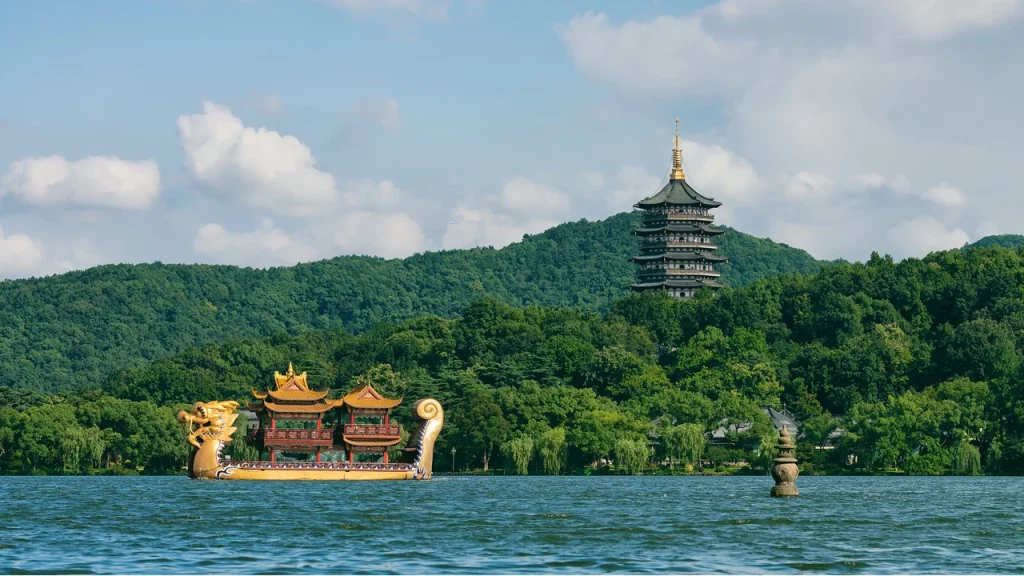
- West Lake: The Quintessence of Chinese Landscape Aesthetics
Classic Route: Broken Bridge → Bai Causeway → Solitary Hill → Autumn Moon over the Calm Lake → Su Causeway → Viewing Fish at Flower Harbor → Leifeng Pagoda. Arrive at 6 AM to avoid crowds, and witness dawn’s blush painting the lake as mandarin ducks dart through the water. - Cycling along Yanggong Causeway: Thirteen bridges weave through wetland secrets, each offering a “roller-coaster-like” undulation.
- Guo’s Villa Tea House: Tucked in Maojiabu, this private garden invites you to savor Longjing tea and Dingsheng cakes—a perfect half-day retreat.
- Nighttime Wonder: Board the Quanrao dragon boat to see Lake Heart Pavilion and Ruangong Islet illuminated by lanterns, as if stepping into Riverside Scene at Qingming Festival.
Hidden Gems:
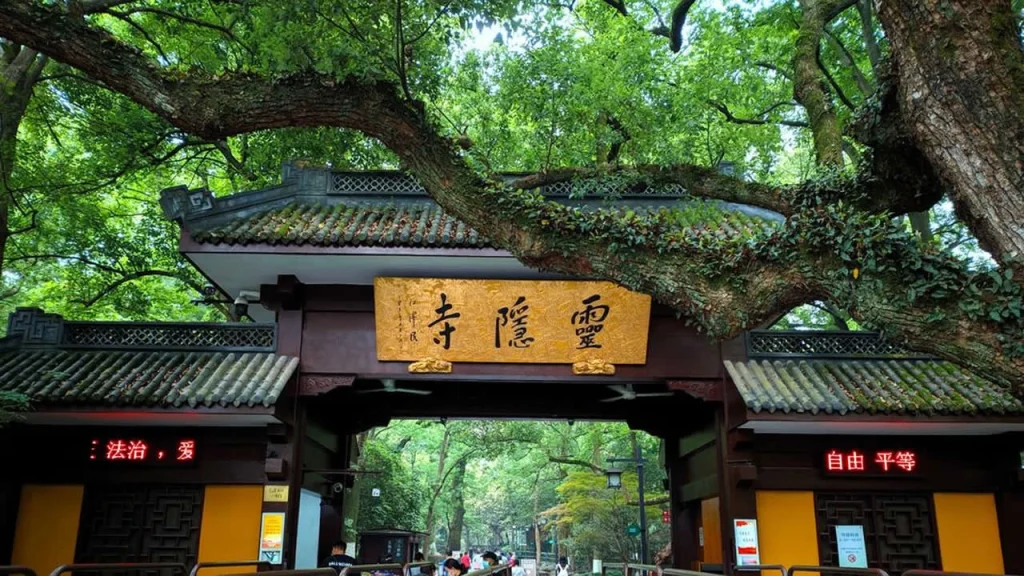
- Lingyin Temple + Feilai Peak: Buddhist Sanctuaries and Grotto Art
Zen Vibes at Lingyin: Arrive before 6:30 AM to experience the temple as the first incense smoke rises, accompanied by chanting. The Grand Hall’s 19.6-meter-tall Sakyamuni Buddha statue is the tallest of its kind in Jiangnan.
Feilai Peak Explorations: Over 340 Buddhist statues from the Five Dynasties to the Yuan Dynasty are carved into cliffs—don’t miss the laughing Maitreya Buddha at the “Splitting Sky” cave, whose joy has endured for millennia.
Hidden Gem: Yongfu Temple (west of Lingyin), dubbed “The First Blessed Land of Qiantang,” offers bamboo-forest tea houses with panoramic views of Hangzhou.
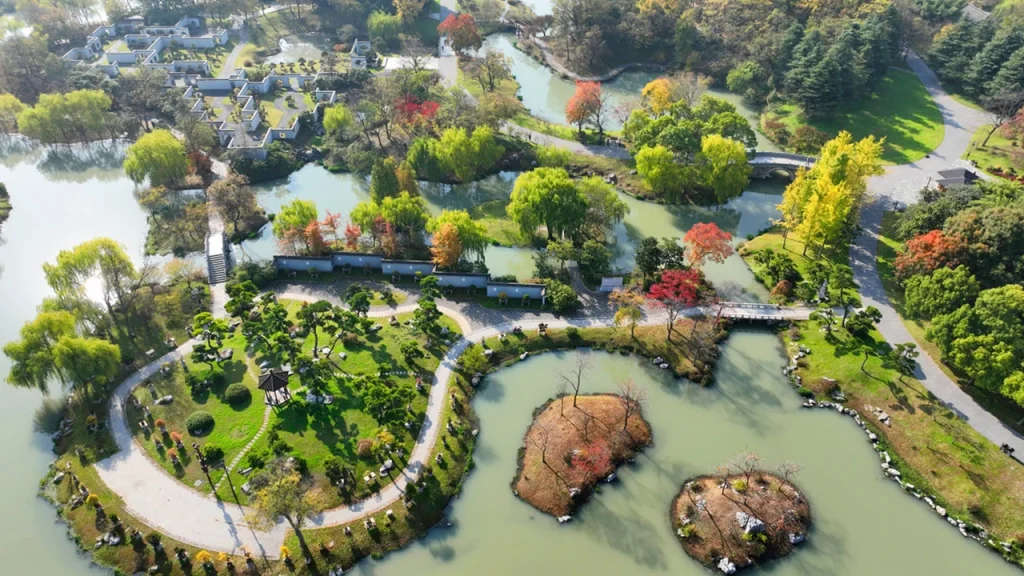
- Xixi Wetland: A Wild Call from the City
Eco-Adventure: Board a punt boat at Hongyuan Dock to witness “Flaming Persimmons Reflecting on the Waves” (September–October). Boatmen will teach you to harvest water chestnuts with a bamboo pole.
Cultural Immersion: Gaozhuang Imperial Street recreates Qing Dynasty street life, where you can craft your own blue-calico fabric.
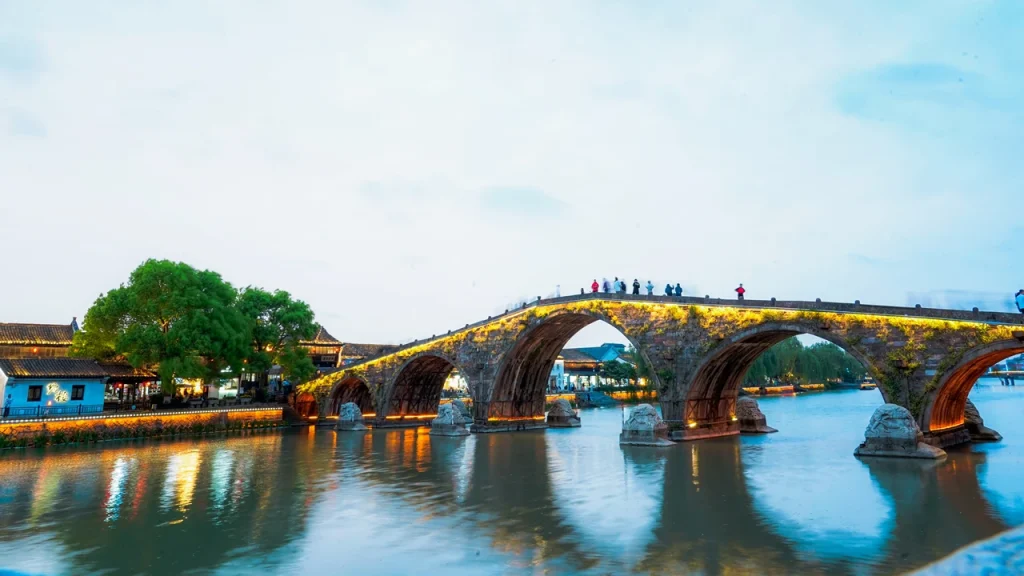
- Beijing-Hangzhou Grand Canal: A Millennium-Long Epic in Motion
West of Gongchen Bridge: Stroll the 138-meter Gongchen Bridge, then explore Bridge West Street’s Knife, Sword, and Fan Museums—guardians of intangible cultural heritage secrets.
Water Bus Adventure: Take Line 1 from Gongchen Bridge to Wulinmen. For just 3 yuan, admire traditional white-walled houses along the banks—a grittier contrast to West Lake’s refinement.
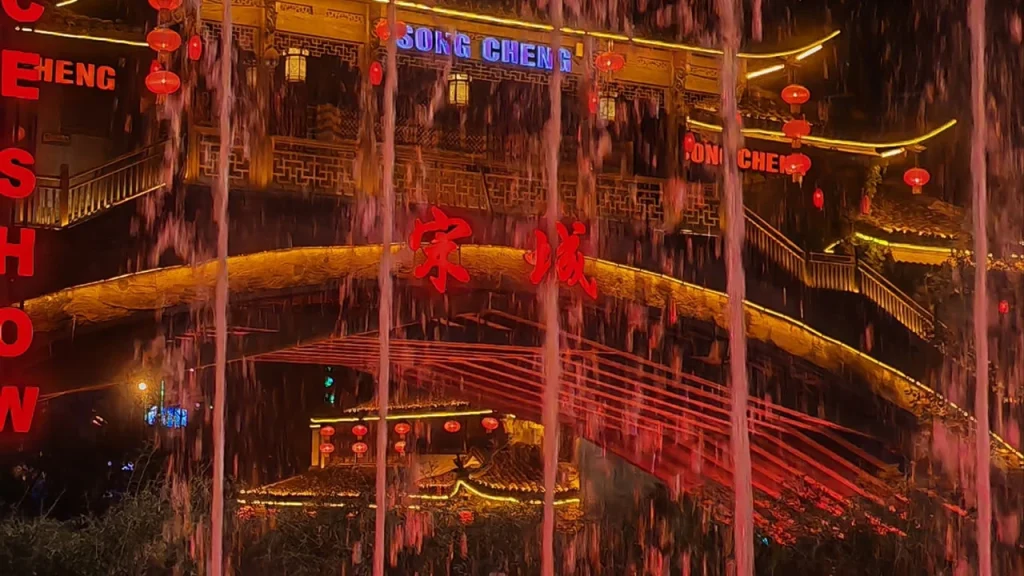
- Song Dynasty Town: Stepping into Riverside Scene at Qingming Festival
Theme Park Thrills: Witness the Rose Ceremony (a traditional Chinese matchmaking ritual), gasp at the edge-of-your-seat “Flying Dagger Show,” and don’t miss the immersive The Eternal Song Dynasty live performance.
Hidden Gems: In Quirky Street, the “Slanted House” and “Upside-Down House” defy gravity, while the “Haunted House” tests courage—enter if you dare!
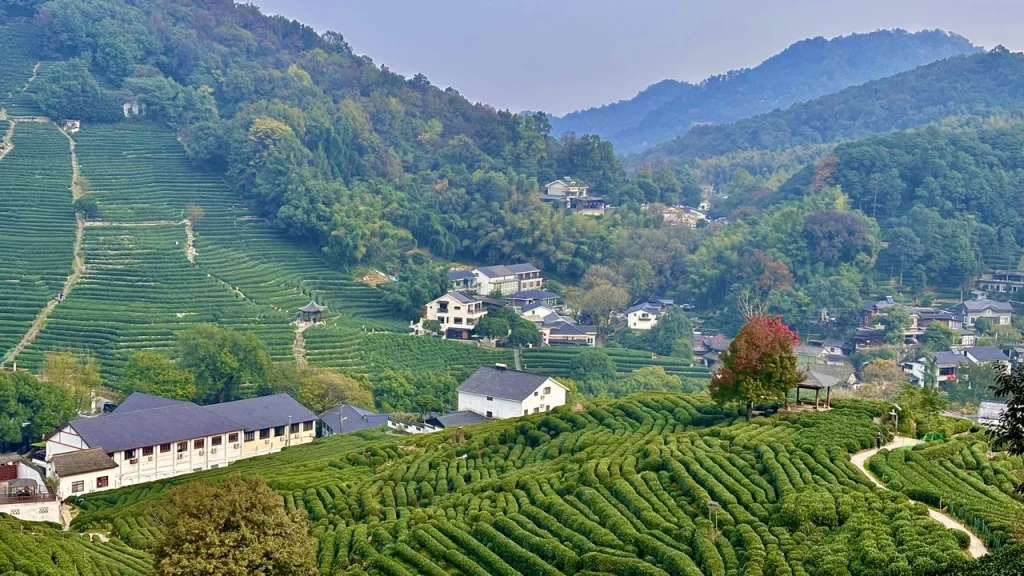
- Longjing Village + China National Tea Museum: The Journey of a Spring Tea Leaf
Tea Trail Trek: Hike from Longjing Village to Shili Langdang, pausing to pick tea leaves and fry them in woks (hint: touch the 200°C iron wok—if you dare!).
Tea Artistry Class: Learn Song Dynasty-style tea preparation at the museum, using a tea whisk to create frothy “tea artistry,” then etch designs in the foam—a millennia-old ritual revived.
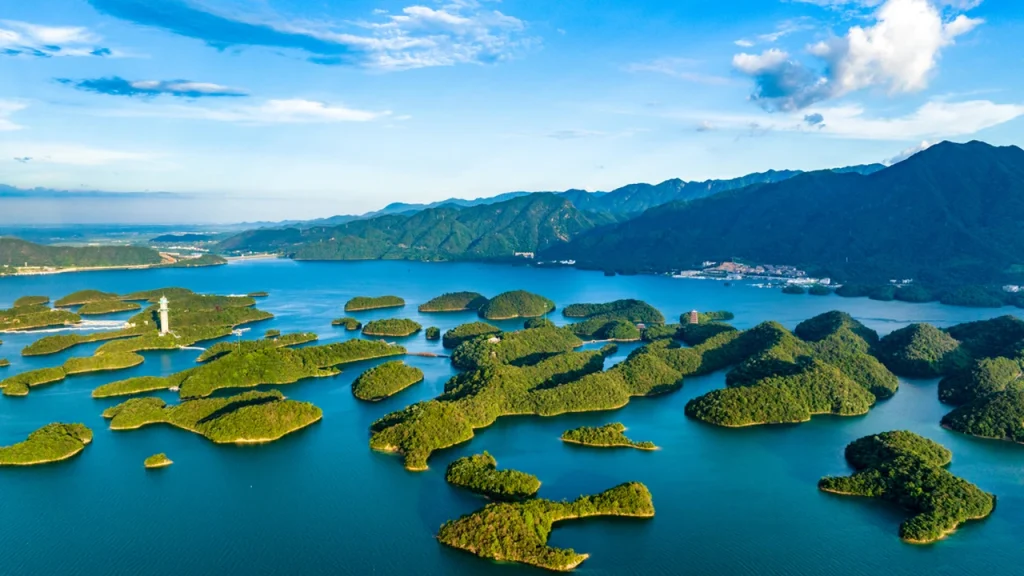
- Thousand Island Lake (Day Trip): The World’s Most Enchanting Waters
Central Lake Zone: - Plum Peak Island: Ascend for panoramic vistas of the archipelago.
- Fisherman’s Joy Island: Dive into aquatic adventures like kayaking and banana boat rides.
- Dragon Mountain Island: Explore the Hai Rui Temple, honoring the Ming Dynasty official’s integrity.
- Qinchuan Ancient Village: Wander Hui-style architecture (characterized by white walls and black tiles) untouched by time.
- Xiajiang Village: Step into the filming location of My People, My Homeland, where rural nostalgia meets cinematic charm—perfect for escaping crowds.
Off-the-Beaten-Path Charms:
Culinary Delights: A Gastronomic Journey Through Jiangnan’s Flavors
- Classic Hangzhou Cuisine: The Art of Umami
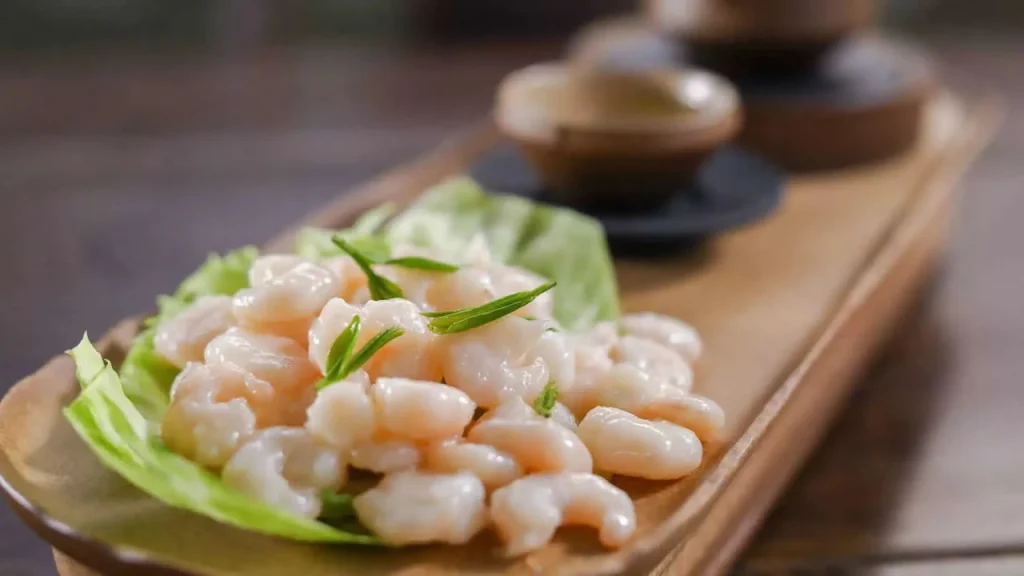
- West Lake Vinegar Fish: A tender grass carp poached and drizzled with a sweet-and-sour gravy—a dish that captures the essence of West Lake’s elegance. Savored at legendary venues like Louwailou and Shanwaishan.
- Longjing Shrimp: Prawns sautéed with pre-Qingming Longjing tea leaves, infusing each bite with floral notes. Best enjoyed piping hot.
- Dongpo Pork: A melt-in-your-mouth cube of pork belly, braised for hours until it glows like jade. Zhiweiguan Restaurant serves the definitive version.
- Beggar’s Chicken: A spring chicken roasted in lotus leaves and clay, its earthy aroma exploding when the crust is cracked. Huqingyu Tang Herbal Hall adds a twist with medicinal herbs.
- Street Food: The DNA of Hangzhou’s Palate
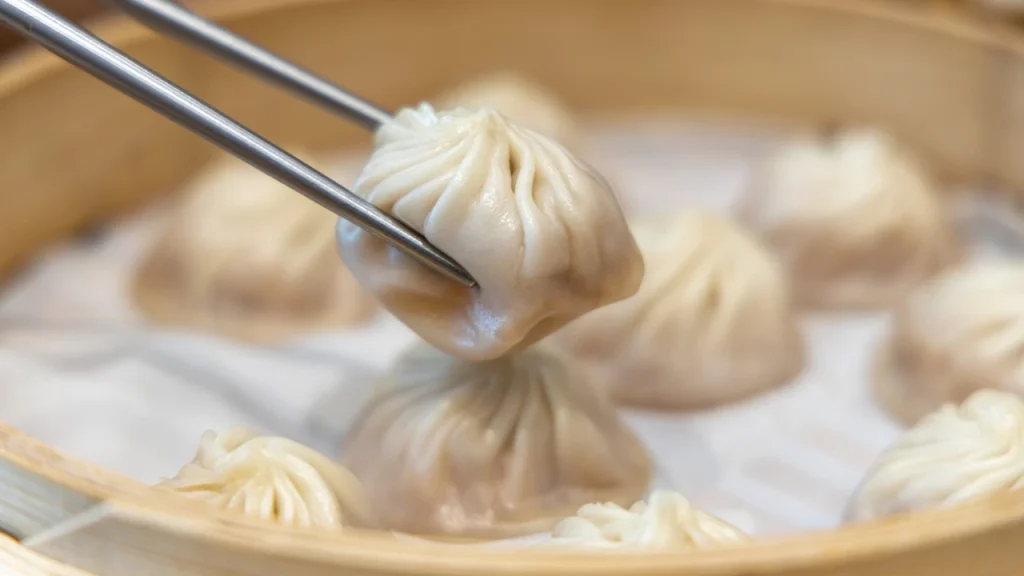
- Cong Bao Gui: A golden pancake wrapped around a crispy youtiao (fried dough stick), pressed on a griddle until flaky. The stall in Grandma Sun’s alley is legendary.
- Xiaolongbao: Steamed soup dumplings bursting with broth—Xinfeng Snacks’ “throat-sized” buns are a morning ritual, paired with duck blood soup.
- Dingsheng Cake: Plum-blossom-shaped rice cakes steamed with red yeast rice—sweet yet balanced. The century-old shop beside Wangxingji on Hefang Street is a must-visit.
- Cat’s Ear Noodles: Almond-shaped pasta simmered in shrimp-and-ham broth—a Zhiweiguan specialty that’s both whimsical and comforting.
- Hidden Gems: Locals’ Secret Food List
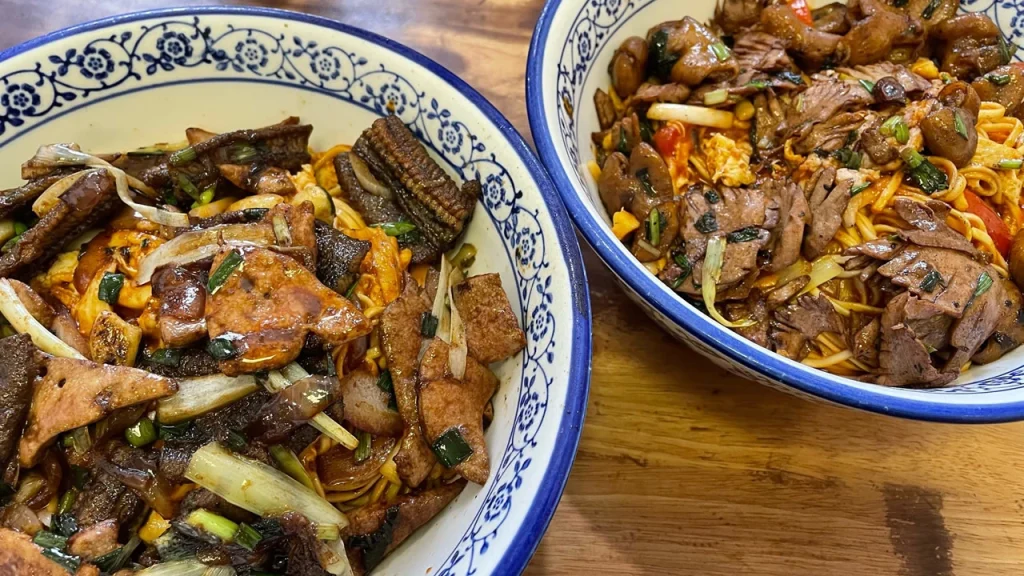
- Huixin Shaomai: A hole-in-the-wall on Deyuan Road where bamboo shoot-and-pork shaomai (steamed dumplings) are paired with shredded egg drop soup. Lines form by 6 AM.
- Fanglaoda Noodle House: A “dark kitchen” combo of tomato-stirred noodles with kidney, eel, and a medley of bold flavors—a cult favorite among Hangzhou foodies.
- Fuyuanju Crispy Intestines: The crispy-chewy texture, paired with garlic soy dip, reveals why Hangzhou locals rave about this offal delicacy.
- Seasonal Rhythms: Eating with the Calendar
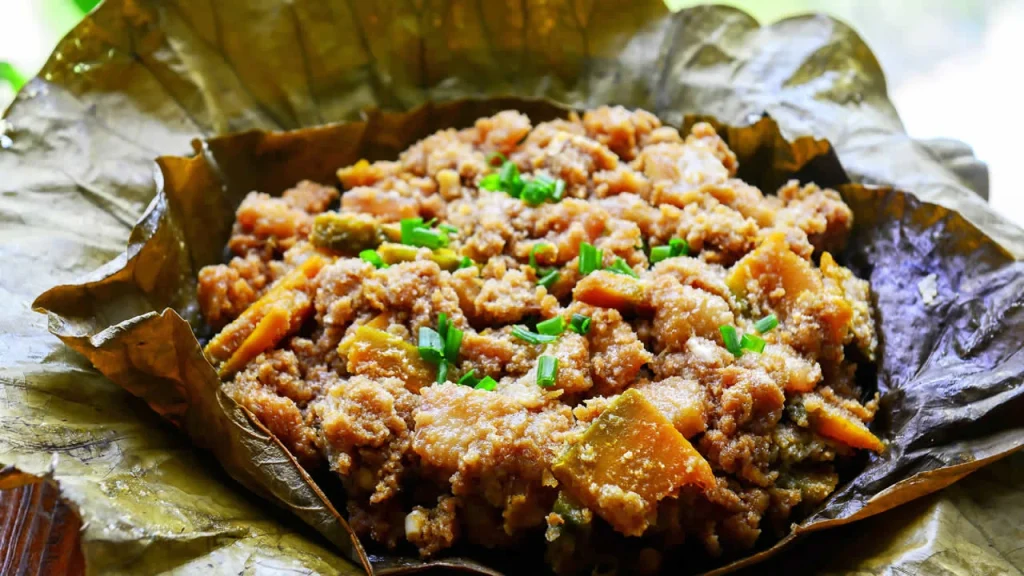
- Spring: Savor wild aster stir-fries, “yanduxian” bamboo shoot soup, and pre-Qingming Longjing tea.
- Summer: Cool down with lotus root starch, steamed pork with rice flour wrapped in lotus leaves, and late-night cold noodles.
- Autumn: Indulge in crab roe tofu, osmanthus-stuffed lotus root, and roasted chestnuts in Manjuelong Valley.
- Winter: Warm up with mutton hotpot, soy-marinated duck, and Zhiweiguan’s sticky rice cakes (a twist on their springtime green rice balls).
Epilogue: Hangzhou—A City to Savor at Leisure
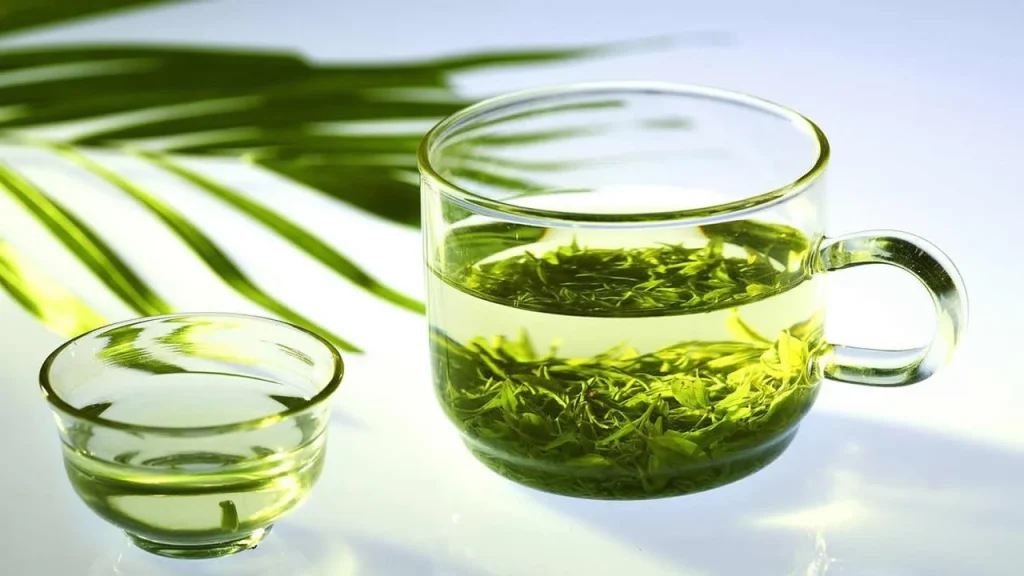
Hangzhou’s charm lies in its reluctance to reveal itself all at once. Like sipping Longjing tea, you must let the morning mists of West Lake, the rhythmic creak of canal oars, and the hustle and bustle of everyday life of alleyway stalls slowly seep into your senses. Whether standing atop Leifeng Pagoda, gazing down at lakes and hills, or crouching by a street-side stall waiting for a pan of Shengjian dumplings, the city gifts you moments to “steal a half-day’s leisure from life’s hustle.” Next time, slow your pace—for in Hangzhou, even time tiptoes, loath to rush.

Leave a Reply